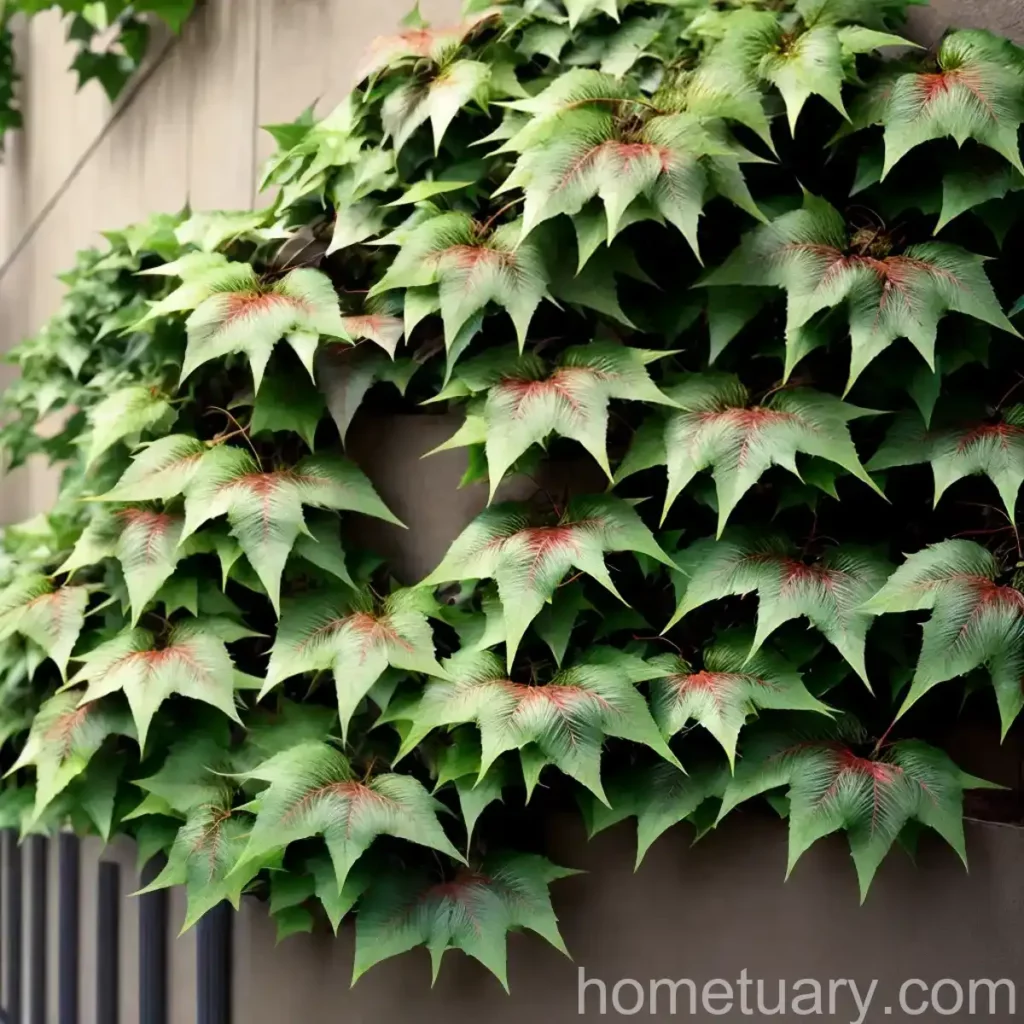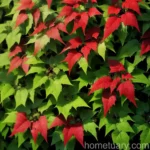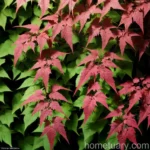Boston Ivy (Parthenocissus tricuspidata ‘Ginza Lights’): A Comprehensive Guide
Introduction
Welcome to this comprehensive guide on Boston ivy, also known as Parthenocissus tricuspidata ‘Ginza Lights’. As a plant scientist, I am thrilled to share insights into this beautiful and versatile plant. Boston ivy is a fast-growing climber known for its stunning foliage and a wide range of uses in landscaping and urban environments.
In this guide, we will delve into various aspects of Boston ivy, including its cultural requirements, uses, maintenance, common diseases and pests, propagation methods, and fun facts. Whether you are a seasoned gardener or just starting, this guide aims to provide valuable information to help you cultivate and enjoy the beauty of Boston ivy.
What is Boston Ivy (Parthenocissus tricuspidata ‘Ginza Lights’)?
Boston ivy, scientifically known as Parthenocissus tricuspidata ‘Ginza Lights’, is a deciduous, fast-growing vine that belongs to the grape family Vitaceae. Originating from eastern Asia, particularly China and Japan, Boston ivy is widely cultivated for its ornamental foliage and its ability to climb and cover vertical surfaces. Its botanical name Parthenocissus tricuspidata is derived from the Greek words “parthenos” (virgin) and “kissos” (ivy), referring to the plant’s ability to cling to various surfaces.
The ‘Ginza Lights’ variety of Boston ivy is prized for its unique and attractive foliage, making it a popular choice for adding visual interest to buildings, walls, and other structures. The leaves of ‘Ginza Lights’ are deeply lobed and feature shades of green, red, and pink, providing a striking display throughout the growing season.
Key Takeaways – Boston Ivy (Parthenocissus tricuspidata ‘Ginza Lights’)
Before we delve into the specifics of Boston ivy, let’s highlight the key takeaways about this fascinating plant:
- Scientific Name: Parthenocissus tricuspidata ‘Ginza Lights’
- Family: Vitaceae
- Variety: ‘Ginza Lights’
- Common Names: Boston Ivy, Japanese Ivy, Japanese Creeper
- Growth Habit: Climbing vine
- Foliage: Green, red, and pink leaves with deep lobes
- Uses: Ornamental vine for walls, buildings, and other structures
- Cultural Requirements: Requires well-drained soil, moderate watering, and full to partial sunlight
- Maintenance: Pruning is necessary to control growth and maintain desired shape
- Benefits: Provides insulation, noise reduction, and wildlife habitat
- Propagation: Can be propagated from seeds or stem cuttings
- Popularity: Widely used in landscaping and urban environments
- Disease Resistance: Generally resilient, but may be susceptible to certain diseases and pests
Now that we have an overview of Boston ivy, let’s explore the specific aspects related to its cultivation, uses, maintenance, and more.
Culture
To cultivate healthy and vibrant Boston ivy, it’s essential to understand its cultural requirements, including water, sunlight, fertilizer, soil, and pruning.
Uses
Boston ivy boasts a wide range of uses in landscaping and urban environments, making it a versatile and attractive plant for various applications.
Landscaping
- Adorning Walls and Buildings: Boston ivy is commonly used to cover and beautify the exteriors of buildings, walls, and architectural structures. Its lush foliage provides an elegant and natural appearance, making it a popular choice for both residential and commercial spaces.
- Creating Green Facades: The vigorous climbing nature of Boston ivy makes it well-suited for creating green facades, contributing to the aesthetic appeal and environmental benefits of buildings and structures.
- Enhancing Outdoor Spaces: Whether it’s for trellises, pergolas, or arbors, Boston ivy adds a touch of greenery and visual interest to outdoor spaces, creating inviting and tranquil environments.
Environmental Benefits
- Providing Wildlife Habitat: Boston ivy offers shelter and nesting sites for birds and insects, contributing to biodiversity and ecological balance in urban settings.
- Air Purification: Like other plants, Boston ivy plays a role in purifying the air by absorbing pollutants and releasing oxygen, thereby promoting healthier outdoor environments.
- Noise Reduction: The dense foliage of Boston ivy serves as a natural barrier, helping to reduce noise pollution in urban areas and enhancing the quality of outdoor spaces.
- Energy Efficiency: By providing insulation and shade, Boston ivy contributes to energy efficiency in buildings, reducing the need for excessive heating and cooling.
Water
Sunlight
Fertilizer
Soil
Pruning
Propagation
Container Popularity
Container
Common Diseases
Disease Diagnosis
Common Pests
Botanist’s Tips
Fun Facts
Links to External Resources
In conclusion, Boston ivy (Parthenocissus tricuspidata ‘Ginza Lights’) is a captivating and valuable plant with a myriad of uses and benefits. Its lush foliage, resilience, and environmental contributions make it a sought-after choice for enhancing outdoor spaces and buildings. By understanding and adhering to its cultural requirements, maintenance needs, and propagation methods, you can successfully cultivate and enjoy the beauty of Boston ivy in your own gardening endeavors.
I hope this guide has provided you with valuable insights into Boston ivy and inspired you to explore its potential in your landscaping projects and urban environments. Happy gardening!















